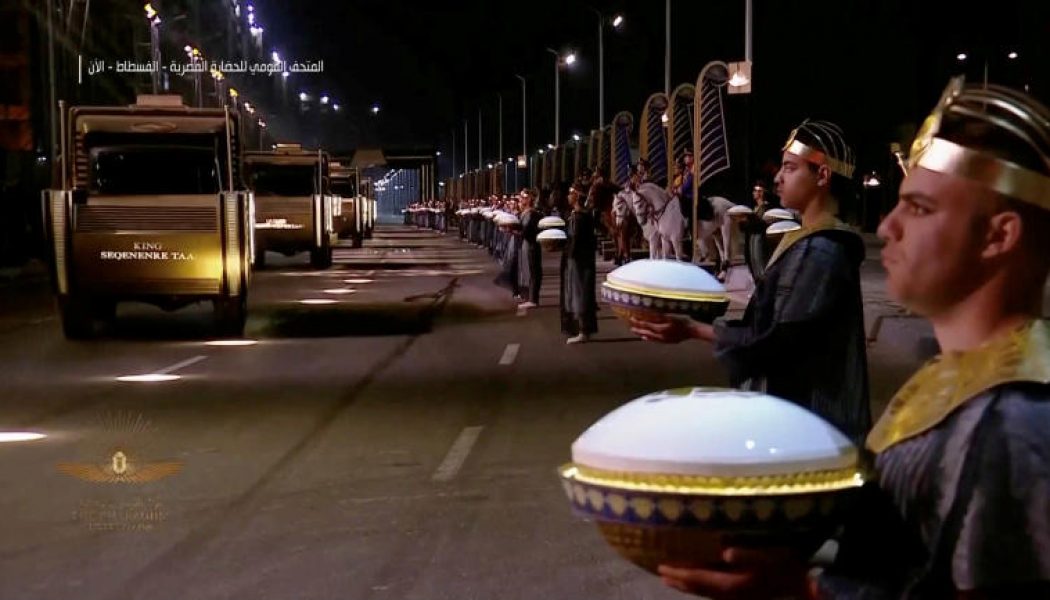Transporting ancient mummies is kind of a big deal, a task to be taken with the utmost of care and attention to detail. These are national treasures. Hence, the rare occurrence of relocating 18 New Kingdom mummified kings and four queens from the Egyptian Museum near Cairo’s Tahrir Square to the new National Museum of Egyptian Civilization in Old Cairo necessitated a full-on made-for-television procession called The Pharaohs’ Golden Parade.
Organized by the Egyptian Ministry of Tourism and Antiquities, the parade saw mummies travel in special floats in chronological order of their reigns, starting with the oldest ruler, Seqenenre Taa II (17th Dynasty) to Ramses IX (12th Century B.C.) along downtown Cairo’s freshly repaved three-mile southbound route. Also among the group? Notable king Ramses II, the longest reigning pharaoh. The mummies were protected from harsh elements via climate-controlled, nitrogen-filled capsules. Each of the 22 floats was labeled with the king or queen that it carried and was surrounded by era-appropriate horse-drawn war chariots.
The elaborate floats mostly disguised the base vehicles on which they were built, but we have some ideas. Given the big mirrors, burly wheels, knobby tires, driver-side hood exhaust stack, and the presumed weight of the floats, the floats are likely based on diesel-powered, military-affiliated trucks.
The custom-made “mummymobiles,” which resembled Egyptian boats, were draped in ancient motifs and golden pizazz fit for the royalty they carry. If you look closely, you can see the mummy capsules riding in (what would be) the trucks’ beds. The absence of rear wheel cutouts makes the rear axle and its wheels virtually disappear beneath the vehicle and helps the body appear to float, while the opposite happens in the front, where a pronounced fender cutout and elaborate matching hubcab design showing off the truck-like characteristics of the mummy chariot. An up-close view shows a functional driver-side door.
The rulers’ new resting place, the new museum in Old Cairo, opened fully after the parade and aims to revitalize tourism in Egypt post-pandemic. The mummies will be displayed in the Royal Hall of Mummies, which opens to the public on April 18.










